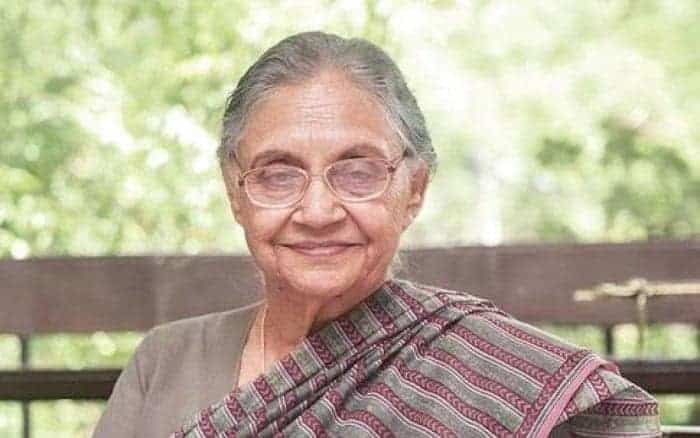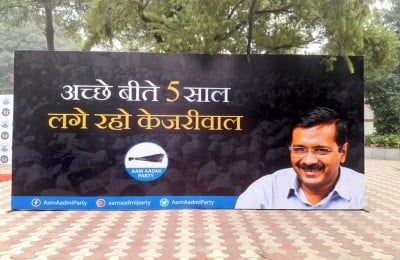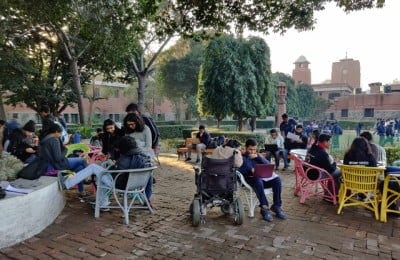The infrastructure and development that smiles across the grand old city of Delhi, has received a new face of direction, but the previous grace has an angle that must not be forgotten.
The Delhi Legislative Assembly Polls of 2020 saw a ‘big broom sweep’ across constituencies with the people’s mandate affirming the development model put forth by the Aam Aadmi Party (AAP), and it’s Supremo, Arvind Kejriwal. but is this the first time in Indian or Delhi politics at all?
The country broke with a ‘new wave’ of politics when incumbent Delhi Chief Minister (CM), Arvind Kejriwal and his AAP were declared as the unanimous voice of Delhi’s electoral population, inclining them for a third consecutive term after a complete term and an incomplete term, previously. Standing against the Bharatiya Janata Party (BJP) and Indian National Congress (INC), Kejriwal defied anti-incumbency which has been sought to be the irrefutable force in elections.
With faces like Home Minister, Amit Shah, and other national leaders of BJP standing against AAP with the ‘reputation’ they hold, winning the elections should be considered a feather in AAP’s hat; their previous term and campaign was called ‘unique’ by many for the welfare schemes and development it brought in the state, particularly in education and health care sectors. But, as to these changes taking place for the first time, Delhi itself shunned out this claim, Congress Stalwart and former Delhi (CM), Sheila Dikshit served the state for three consecutive full terms, and in many regards changed its course for the better. Akin to Kejriwal, she was elected as Delhi’s Chief Minister at a time when an opposition party was in power at the center and Atal Bihari Vajpayee was as popular a leader as Narendra Modi is.
Rising amongst contestants like Shushma Swaraj, Madan Lal Khurana, and Sahib Singh Verma, Dikshit was elected as Delhi’s CM first in 1998 and again in 2003, and 2008 with full majority, her work towards Delhi’s development is well appreciated by everyone, despite of party affiliations and ideologies.
The champion of Delhi’s development and planning held a positive approach in almost every aspect of governance, from empowering Delhi’s power supply which was in a fix before 1998, to solving the problem of lack of public transport – our beloved Delhi Metro saw its existence during Dikshit’s term and is lauded all over for the revolution it brought in the lives of commuters.
The DTC bus also lends its current stature and fleet numbers to Dikshit and so does the adoption of CNG; her vision for the promotion of alternative gases to combat pollution was done at a time when the notion couldn’t cross the periphery of textbooks. The flyovers and roads that have been built across Delhi-NCR are the testimonies of her path-breaking work and perception.
The beautification and aesthetic addendums in Delhi are also a part of her vision which were laid open to welcome the world during the Commonwealth Games that Delhi hosted in 2010, amidst controversies and charges, the smooth conduct and success of the games is endowed with enormous contributions from the then Delhi CM.
Many new schools were added and Delhi continued to be the educational aspiration for many across the nation. The accommodation of everyone was a plan that she adopted in order to improve the education and infrastructure of our country.
Every year, millions also head the capital in hope of employment that was well taken care of by the adoption of Special Economic Zones (SEZs) and setup of specified areas, further, healthcare was an important parameter where she did manage to make some significant changes by extending hospitals and employment of doctors and medical practitioners.
Thriving amidst the misogynistic political ambience Dikshit didn’t falter to lose even at the age of eighty, contesting elections and standing firm to her popular reputation. This inspiring political figure passed away on 20th July 2019 but stands out unforgettable in Indian political history.
Feature Image Credits: Deccan Herald
Faizan Salik




